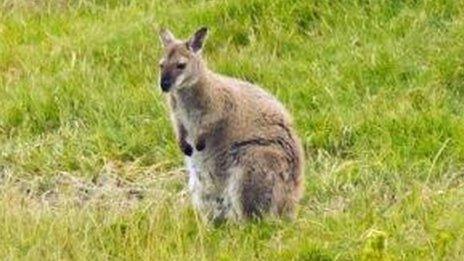Why kangaroo culling divides Australia
- Published
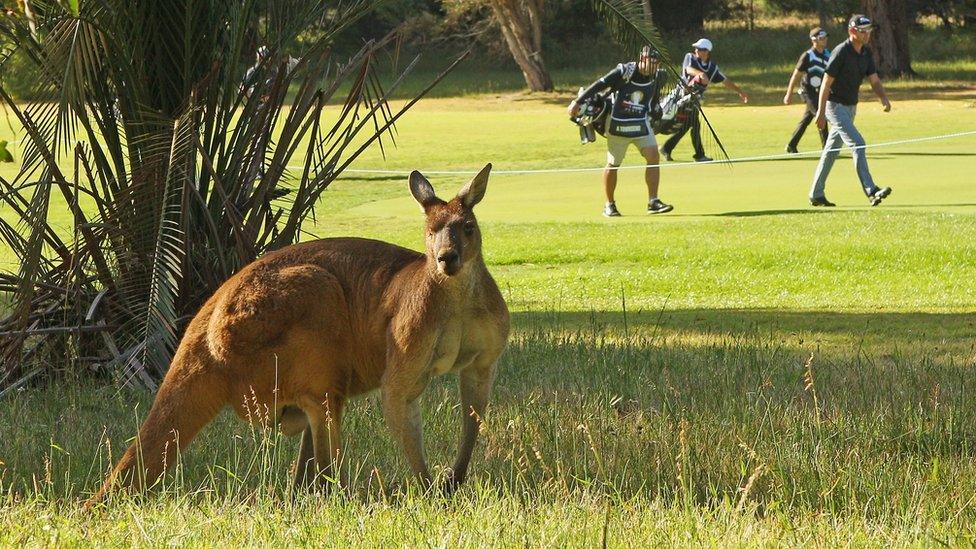
The New South Wales government insists its cull quota is sustainable
Australia is planning to kill more than a million kangaroos this year to protect endangered grasslands and wildlife.
However, as Julian Lorkin writes, Australia has a complex relationship with its kangaroos and some environmentalists argue it is a needless slaughter.
The sharp crack of a rifle echoes through the hills above Muswellbrook in the dry heat of summer. In rural New South Wales (NSW) the most iconic of Australian animals, the kangaroo, is in the hunter's sights.
This year's cull is about to get under way and, as with recent years, more than a million kangaroos are expected to be shot.
This doesn't sit well with Brad Smith, from the Upper Hunter Wildlife Aid group. He's nursing back to health some of more than 160 orphaned infant kangaroos, called joeys, he rescues each summer.

You might also be interested in:

"Sometimes their mothers are shot by farmers, but the hunter saves the joey and calls me to come and pick up the orphan, which can be any size from a tiny hairless 'pinky' to a 200-day-old adolescent, about to leave the pouch," he tells the BBC.
"That pouch is well padded, and saves the joey, even if their mother is killed by a car, and leaves the youngster alive."
Mr Smith feeds the joeys and distributes them to foster homes. Hand-rearing kangaroos is a labour-intensive process which can take up to two years. They are then released back into the wild, to face hunters again.
Foster homes for joeys abound in the mining towns of the Hunter Valley, where the animals spend months in artificial pouches on A-frames. Over a decade Mr Smith has spent nearly A$40,000 (£24,000; $30,000) making the frames.

Orphaned joeys are reared in artificial A-frame pouches
Two eastern grey kangaroos, nicknamed Marmite and Gingerbread, are already causing trouble in their adopted pouches. "Sometimes I find an empty pouch, only to find one has jumped across into the other's pouch for some company," he says.
"They always have to be raised in twos so they know what another roo looks like. A pair will buddy up and recognise their own species, and when released they will become accepted by a group. On their own, they think they are human, and bound towards hunters."
The argument for culling
Once in the wild, however, the orphaned joeys become fair game for those on the other end of a rifle.
"Eastern greys are very cute, and a critical part of the ecosystem, but the huge number of kangaroos is destroying the ecosystem," argues Prof David Lindenmayer, a landscape ecology expert from the Australian National University.
"We used to have a huge number of top predators like the Tasmanian tiger. However, indigenous overhunting took them out, and then settlers culled predators like dingoes. Now the bush is a bountiful food locker with lots of grass and water, and few predators other than the car."
He says the real problem is that different value sets have clashed. "Animal welfare people care and protect some animals, but there are so many marsupials, they inhumanely starve to death," he says.
Prof Lindenmayer is concerned people are squeamish about killing them to cut down the numbers, partly because "the kangaroo is on the nation's coat of arms".
Although official statistics are not yet available, Louise Boronyak, from anti-cull group THINKK at the University of Technology Sydney, says about 1.6 million kangaroos were culled in 2016 - similar to the year before.
The NSW government insists the quotas are fine, with an Office of Environment and Heritage spokesperson saying they are "sustainable in the long term".
Kangaroos are also a familiar sight around Canberra's parliament, where they hop along government lawns. The nation's capital territory allows a yearly cull of around 2,000 kangaroos, in its annual measure to control the population and protect native grassland from overgrazing.
"Few politicians have the guts to applaud kangaroo shooting never mind how necessary it is," Prof Lindenmayer says. "And yet, in the case of the leadbeater's possum and the legless lizard, the state stepped in to protect their grasslands as mobs of kangaroos, fire and logging drove them close to extinction. There are really positive outcomes where we do the right intervention."
The cull is far from the drunken bloodbath portrayed in another Australian icon, the 1971 film Wake in Fright, when a teacher gets stranded in the outback, spends a day in the pub, and then drunkenly shoots roos from the veranda.
Under the federal code of practice, kangaroos can only be shot in the head, although heart shots are allowed for killing animals which are then wounded.
The case for sparing kangaroos
Each year the cull provokes controversy, with opponents suggesting there is no evidence that reducing kangaroo numbers helps the environment.
"The cull doesn't work," Louise Boronyak says.
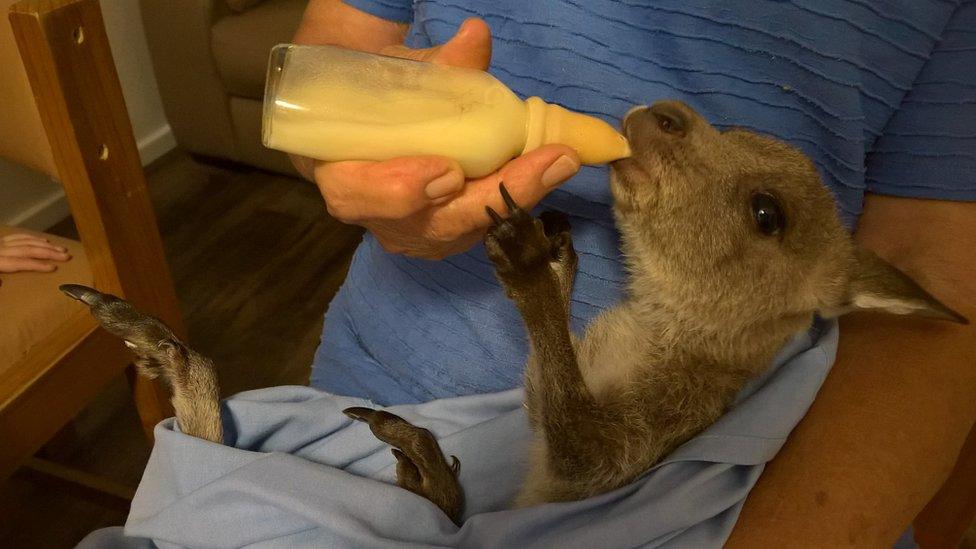
Hand-rearing joeys is a labour-intensive process
"There is no compelling argument that they cause damage to the ecosystem. Indeed, they keep grass short - preventing wildfires - and fertilise nutrient-poor soils."
She says kangaroo numbers are already declining in some places.
"Last year there was a mass die-off of roos, probably due to disease. Some areas are now completely devoid of marsupials," she says. "Every Australian has grown up with abundant wildlife, so we take it for granted, but much is vanishing. It's not sustainable."
Dead kangaroos aren't wasted. The carcasses are used for dog food and some meat is sold for human consumption, but 95% goes overseas. "It's a shame we don't eat more at home," says Prof Lindenmayer, who is a fan of kangaroo steaks. "It's tender, with a lot of flavour."
He says if Australians ate kangaroos rather than beef it would go some way to combating greenhouse gases.
"Cows aren't native, and their methane pollutes," he adds. "Alas in Australia, we don't like eating 'Skippy'."
- Published18 June 2015
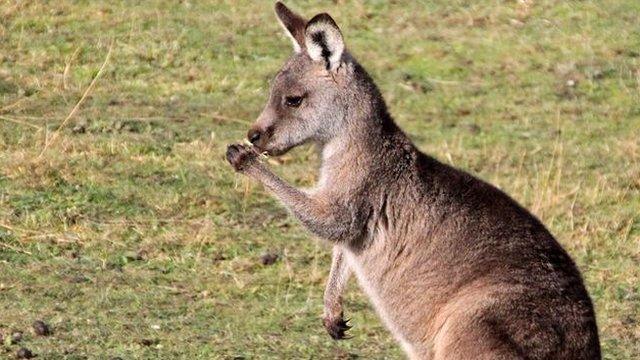
- Published10 June 2016
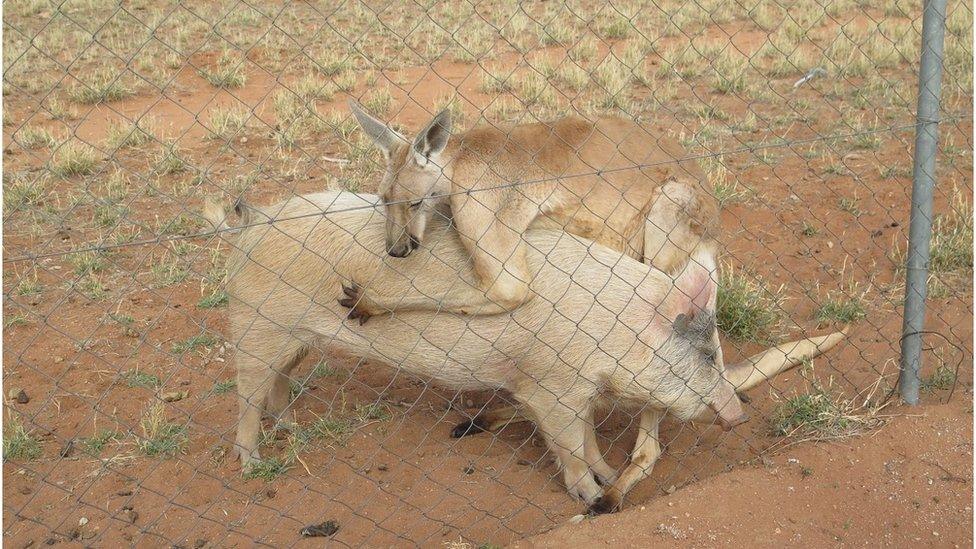
- Published2 May 2016

- Published7 March 2013
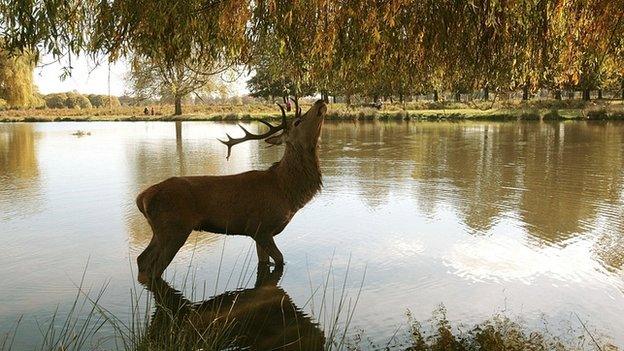
- Published4 April 2016
